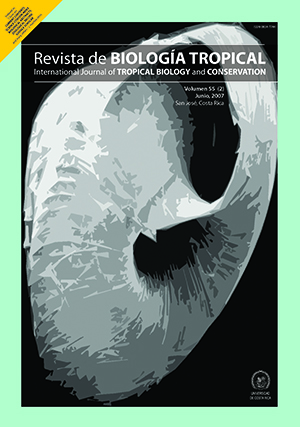Abstract
In the Gulf of Nicoya on the Pacific Coast of Costa Rica, nutrient rich equatorial subsurface water (ESW) is upwelled in much of the lower gulf. These offshore waters are often regarded as the major source of nutrients to the gulf. However, for most of the year, the ESW has little influence on the nutrient content of the upper gulf, which has a distinct character from the lower gulf. The upper gulf, extending 40 km north of the restriction between Puntarenas Peninsula and San Lucas Island, is bordered primarily by mangrove swamps, is less than 20 m deep, and is less saline than the lower gulf. We surveyed the upper gulf for dissolved inorganic nitrogen, phosphate, silicate, dissolved oxygen, and chlorophyll in November 2000, January and July 2001. All nutrients are more concentrated in the upper gulf during the rainy and transitional seasons than the dry season, significantly so for phosphate and silicate. Throughout the year, nutrients tend to be much more concentrated in the less saline water of the upper gulf. This trend indicates that discharge from the Tempisque River predominantly controls spatial and temporal nutrient variability in the upper gulf. However, nutrient rich ESW, upwelled offshore and mixed to form a mid-temperature intermediate water, may enter the inner gulf to provide an important secondary source of nutrients during the dry season.Comments

This work is licensed under a Creative Commons Attribution 4.0 International License.
Copyright (c) 2007 Revista de Biología Tropical
Downloads
Download data is not yet available.






